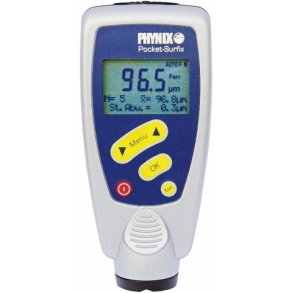What is Coating Thickness Measurement?
The thickness of coatings on metallic substrates can be measured using simple methods, provided the coating and the substrate have significantly different magnetic or electrical properties.
The thickness of non-ferromagnetic coatings on ferromagnetic substrates is most easily measured with instruments based on magnetic or electromagnetic principles.
The magnetic methods are mainly used to measure the coating thickness of paint, plastics, and non-magnetic metal coatings on “mild” steel.
Advantages
- Fast results (just a few seconds per test)
- Measures both on magnetic and non-magnetic surfaces
- Simple execution
- Efficient and reliable results
Coating Thickness Measurement Historically:
Corrosion protection or decorative coatings have always had to meet certain thickness requirements to fulfill their purpose. Consequently, many years ago there was a desire for instruments that would allow fast and relatively accurate measurements of coating thicknesses on metals.
With steel as the most important structural material, it was natural that from the outset there was interest in the magnetic attraction force, which decreases noticeably with distance when a magnet is moved away from a steel item. The spring-loaded magnet used as a thickness gauge practically invented itself.
Unfortunately, the accuracy was not overwhelming, so as semiconductor technology advanced and lightweight, stable amplifiers were developed—which could detect very small changes in electromagnetic circuits—a series of progressively improved instruments appeared, using magnetic inductive principles. Already in the early 1960s, there were instruments as good as today’s, but they were somewhat cumbersome and not particularly inexpensive. Since then, development has mostly focused on creating more user-friendly devices.


_copy (1) (1)/assets/images/header/trustpilot.png)
